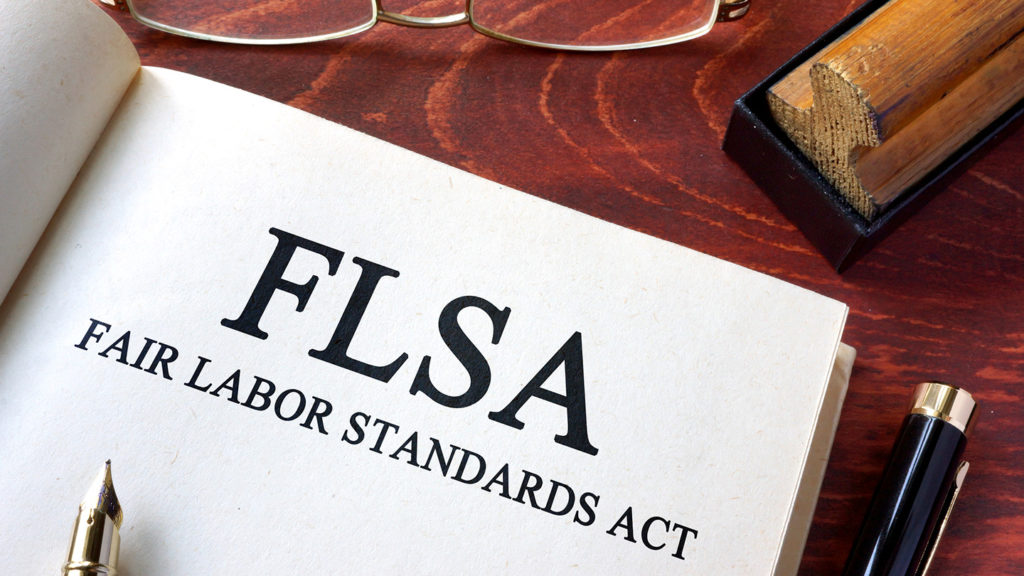
The new joint-employer standard released Thursday by the National Labor Relations Board will present greater risk for employers that contract with services providers, “creating greater liability for the actions of others,” according to senior living experts.
The NLRB said its new joint-employer standard reflects a “legally correct” return to common-law principles and a “practical approach” to ensuring employers respect their bargaining obligations. But senior living industry advocates said that the issue is complex and that the rule represents a “significant departure” from current law.
“This rule moves from a 2020 rule that set out a simplified determination of ‘joint employer’ status to one that significantly expands the standard, making it easier to establish an entity’s status as a joint employer,” Jeanne McGlynn Delgado, American Seniors Housing Association vice president of government affairs, told McKnight’s Senior Living. “This will present greater risk for any employer who contracts with services providers — such as staffing agencies or subcontractors — in terms of creating greater liability for the actions of others.”
Of particular concern, Delgado said, is the rule’s requirement that joint employers both must bargain with the union representing the joint employees and may be liable for unfair labor practices committed by the other employer. She added the rule also could serve to incentivize more union-organizing efforts.
Many long-term care providers routinely enter into contracts to provide services to residents, including temporary staffing contracts, therapy, food service and maintenance agreements, LeadingAge said, adding that providers also often share service agreements with hospitals or other providers sharing their campus.
LeadingAge called the new standard “much broader and more vague” than the existing rule in its previous comments.
“Our concern with the new rule is that aging services organizations will face challenges in determining how to align existing business models and arrangements to this new standard, such as contracts with services providers, or to structure new arrangements, in a way that can reasonably be expected not to result in a joint-employer determination,” LeadingAge Vice President of Legal Affairs Jon Lips told McKnight’s Senior Living.
“If actual control, reserved control — whether exercised or not — direct control and indirect control of one or more essential terms and conditions of employment may all be sufficient to establish status as a joint employer, it creates additional uncertainty compared to the existing rule, and with it the risk of expanded collective bargaining obligations and of liability for unfair labor practices committed by an organization’s business partners, with respect to that partner business’ own employees,” he added.
Senior living advocates had voiced their opposition to the proposed standard during the comment period.
Argentum signed on to comments from the Coalition for a Democratic Workplace, which recommended that the NLRB “start over or leave the current standard in place.” The coalition argued that the rule was “arbitrary and capricious, diverges from the common law, ignores federal law, congressional intent, and court precedent, and would undermine collective bargaining and destabilize labor relations.”
The new standard
Under the new standard — scheduled to be published in the Federal Register today — a joint employer is defined as an entity that shares one or more of an employee’s essential terms and conditions of employment related to compensation, work hours and schedules, duty assignment and supervision, work rules and discipline, employment tenure and working conditions.
The new rule rescinds the 2020 final rule, which the NLRB said made it easier for joint employers to avoid that status because it set a higher threshold for possessing or exercising substantial direct control over conditions of employment. The agency said the new rule provides extensive guidance on rights and responsibilities in situations where joint-employer status has been established.
“The board’s new joint-employer standard reflects both a legally correct return to common-law principles and a practical approach to ensuring that the entities effectively exercising control over workers’ critical terms of employment respect their bargaining obligations under the NLRA,” or National Labor Relations Act, Chairman Lauren McFerran said in a statement.
The NLRB received more than 13,000 comments after publishing a notice of proposed rulemaking in the Federal Register on Sept. 6, 2022. The new rule goes into effect Dec. 26.
Legal reaction
Law firm Fisher Phillips said the “controversial” rule will result in increased union organizing and collecting bargaining efforts.
In a blog post, firm attorneys said that instead of requiring actual direct control over essential terms of and conditions of employment, even potential retained (but unexercised) indirect control over working conditions could be deemed sufficient to label a business a joint employer for labor relations purposes.
Fisher Phillips recommends that employers review written service agreements and underling practices; review franchisor-franchisee arrangements; work with an attorney to evaluate service contacts and related documents for language reserve the right of control over workers; assess vulnerability to union-organizing efforts; train managers in best practices in dealing with third-party staff, franchisees and contractors; and create clear policies on the role of third-party vendors.
Emily Harbison, a partner at law firm Reed Smith, told McKnight’s Senior Living that the new rule makes it much easier for a senior living provider to be deemed a joint employer of someone from a third-party staffing agency.
That fact means senior living providers may have to bargain with a staffing agency-related union with respect to “any” terms and conditions of employment that it possesses the authority to control or exercise the power to control. Providers also potentially could be liable for unfair labor practices committed by the other employer and may be subject to union picketing or boycotts during labor disputes.
“While the new rule will likely be challenged, senior living providers who use staffing agencies or temp agencies — or otherwise obtain services from individuals who are not their direct employees — should consider their policies and practices around the exhaustive list of the seven key terms and conditions of employment that the new rule considers to determine the risk they may be deemed a joint employer,” Harbison said.


